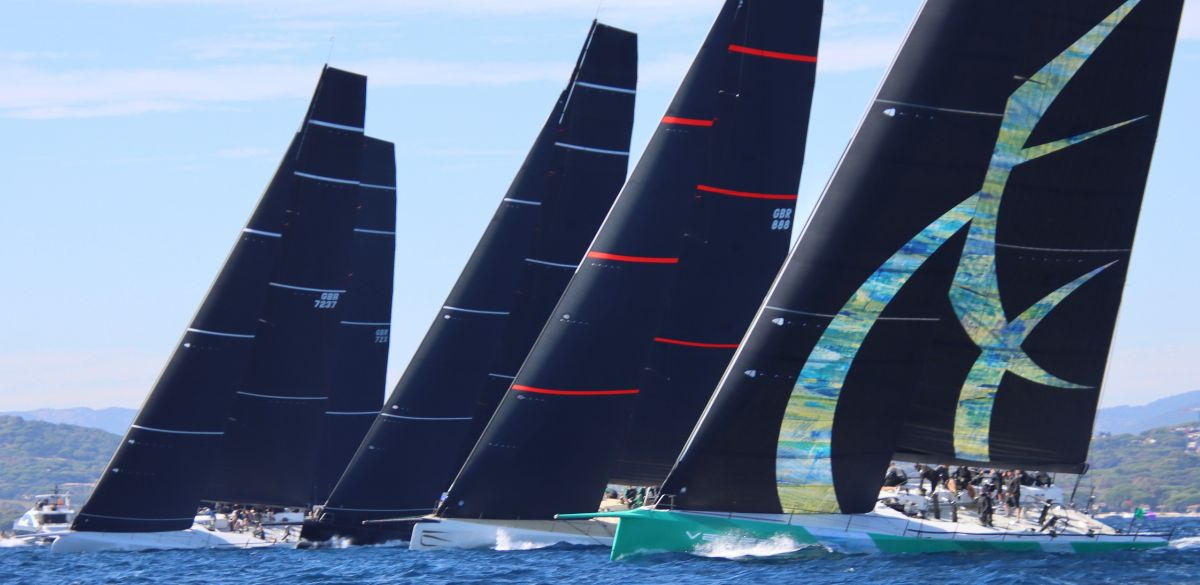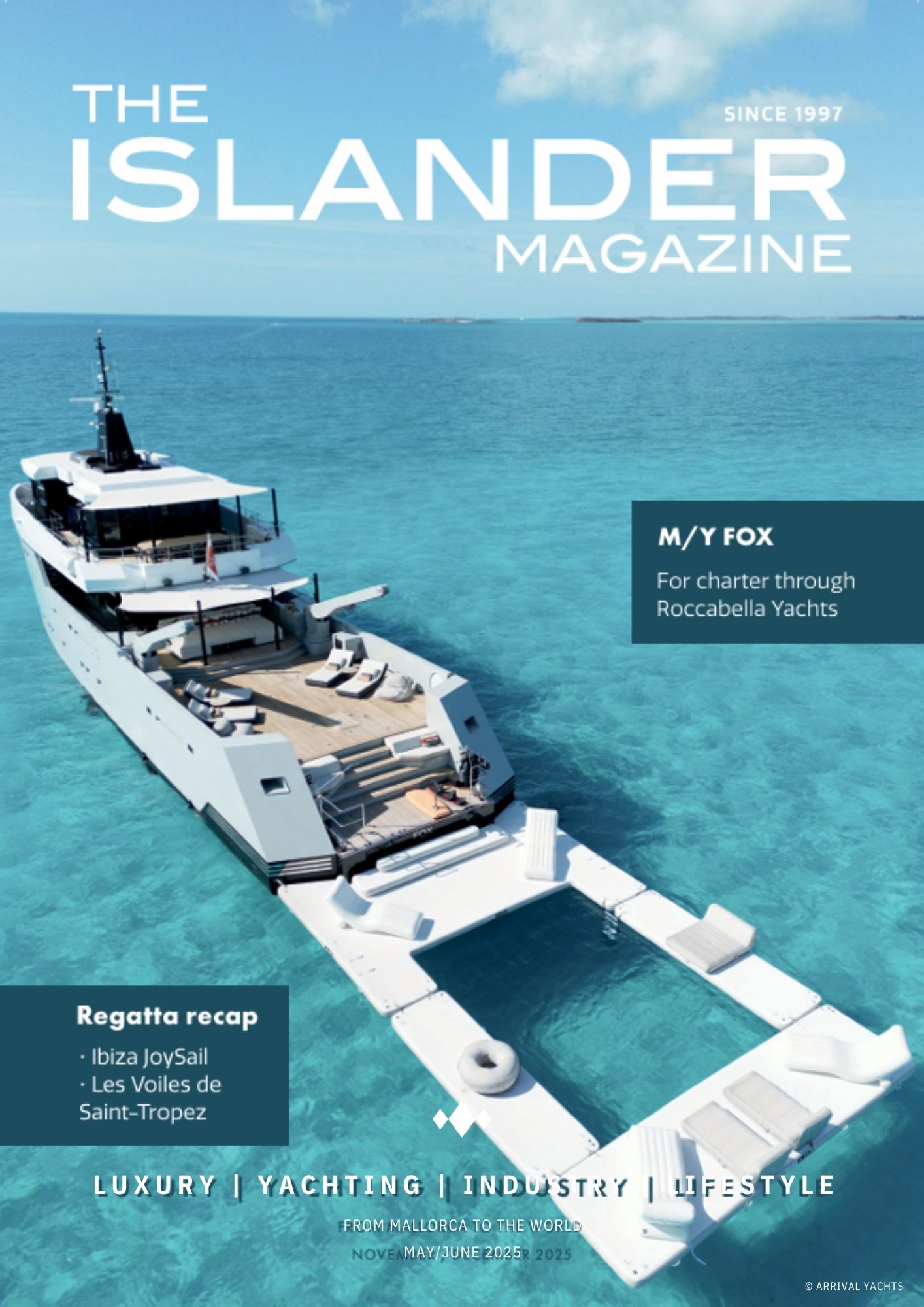Les Voiles de Saint-Tropez remains one of the Mediterranean’s most iconic and prestigious regatta weeks, where a dazzling array of classic and modern yachts race amid the timeless charm of the Côte d’Azur’s most glamorous fishing town. The 2025 edition once again brought together a record 41 Maxi yachts for an unforgettable week of sailing, spectacle, and sportsmanship.
The Maxi divisions—open to yachts over 60 feet—delivered some of the most intense racing of the event. A mix of coastal and windward-leeward courses across the Bay of Pampelonne tested every facet of boat handling, teamwork, and tactical finesse. With shifting breezes and razor-thin points separating the fleets, this year’s racing was a masterclass in big-boat competition.
At the heart of the action were two of the most admired 100-footers in the world—the Wallycentos Galateia and V. Both launched over a decade ago, these white giants continue to define the cutting edge of superyacht performance and style. Built under Wally’s “box rule” concept, the Wallycentos blend radical technology with owner-driven comfort, setting the benchmark for modern Maxi racing.
Galateia and V: Veteran Rivals, Lasting Excellence
Galateia, owned by David M. Leuschen and Chris Flowers, captured the spotlight this season by winning the 2025 IMA Mediterranean Maxi Inshore Challenge (MMIC)—a five-regatta series that concluded in Saint-Tropez. Her triumph broke the long dominance of Benoît de Froidmont’s Wallyño, a former three-time champion.
Galateia’s season wasn’t without drama. During the opening day in Saint-Tropez, she suffered a start-line collision with Capricorno and the race committee boat, damaging her hull at the waterline. In a race against time, the team rushed to La Ciotat for emergency repairs—returning just two days later to rejoin the fleet. “It was heartbreaking, but our shore crew and team did an amazing job,” said tactician Kelvin Harrap, praising the crew’s resilience and professionalism.
The team’s comeback sealed their season-long success, built on consistent results and technical refinement. Upgrades this year included hull optimization, water ballast adjustments, and new sail development with Doyle Sails’ Richard Bouzaid, supported by a world-class afterguard featuring Murray Jones and Markus Weiser.
Meanwhile, V, owned by Karel Komárek, dominated Les Voiles de Saint-Tropez itself, taking four wins from six races to secure the overall regatta victory. The duel between V and Galateia—two decade-old designs still at the pinnacle of performance—showcased how commitment, evolution, and precision engineering can outpace even the newest builds.
A Legacy of Innovation
Their enduring rivalry underscores the unique spirit of the Maxi world: passion balanced with relentless pursuit of progress. These yachts may be over ten years old, yet they continue to evolve—fine-tuning hydrodynamics, refining control systems, and pushing their crews to new limits.
As Galateia and V now prepare for their winter campaigns in the Caribbean before returning to Europe next summer, their continued success embodies the very essence of Wally’s vision—performance, beauty, and innovation united in motion.
At Les Voiles de Saint-Tropez 2025, the message was clear: the reign of the 100-foot Wallycentos is far from over.
Maxi LYRA, Wally 77 in front of Spirit 111 Geist
Lyra once again proved she remains a force to be reckoned with within the Maxi fleet. Racing in the Maxi 3 division, she pushed the pace all week and came agonizingly close to victory, ultimately finishing just two points behind the winner Twin Soul B (Mylius 80)
Django 7X: Winner of the Maxi Grand Prix Fleet
Django 7X — New Kid, Strong Showing at Les Voiles de Saint-Tropez
The Wallyrocket 71 Django 7X entered as one of the newest and most exciting entries in the Maxi Grand Prix fleet — and she didn’t disappoint. With a lightweight hull, aggressive water ballast, and a minimal rating, Django 7X is built for performance under IRC and shows that her design is more than just potential — it’s race-winning capability.
Dominant Races in Light Air
On one of the event’s lighter days, Django 7X delivered two bullet races in the Grand Prix class. In the first, she led from the line to the finish by over four minutes on corrected time. The second race brought stiffer competition — she was second across the line to Jethou, but narrowly beat her on corrected time by just 14 seconds. These results showed both raw speed and precision tuning — especially in conditions where every decision matters.
Closely Contested Overall Victory
Django 7X’s strong early results were bolstered by her consistency over the week. Although she didn’t win every race, her finishes were close enough to keep her in the hunt. On the final day, under ideal conditions with a 12–15 knot southwesterly breeze, she held off her rivals long enough to secure overall victory in the Maxi Grand Prix class — winning by just a single point over Vesper.
Team and Technical Highlights
Project manager and tactician Vasco Vascotto praised the crew’s ability to “find good lanes” and make the yacht work cleanly in tricky wind shifts. The design philosophy of Django 7X — light displacement, high ballast, efficient sail plan — paid dividends, especially downwind. And though upwind legs sometimes proved more challenging, the team’s sail trimming, starts, and maneuvers often turned those deficits into advantages.
Significance in the Maxi Fleet
With Django 7X’s arrival, the Grand Prix class gains a new benchmark. As other boats such as Galateia and V battled it out in Maxi 1, Django 7X’s presence underscores that innovation and youth in design still have a major role in shaping outcomes. Her performance demonstrated that a newer design can leap into the elite cohorts if the boat is handled with respect and sailed sharply.





























0 Comments